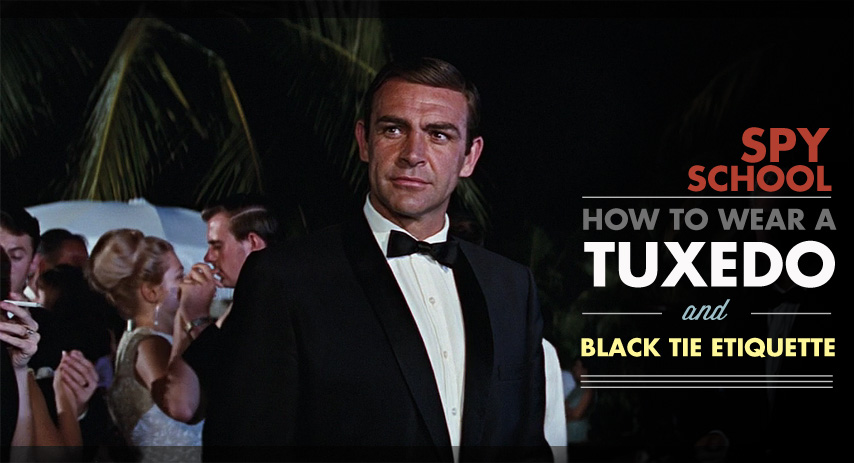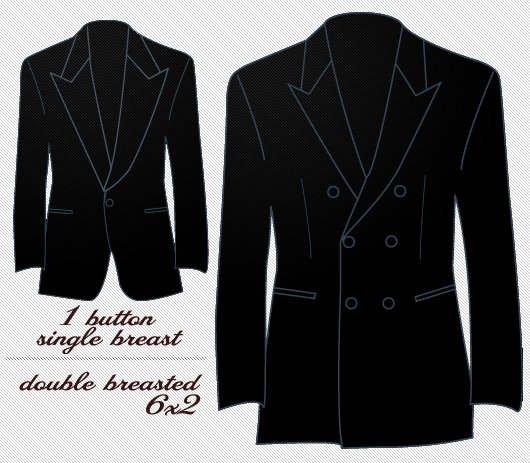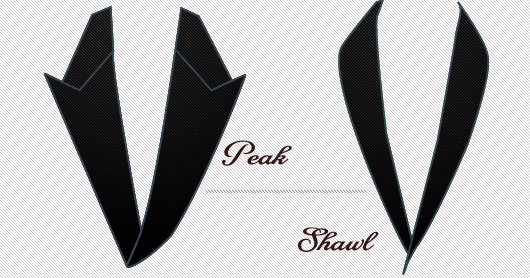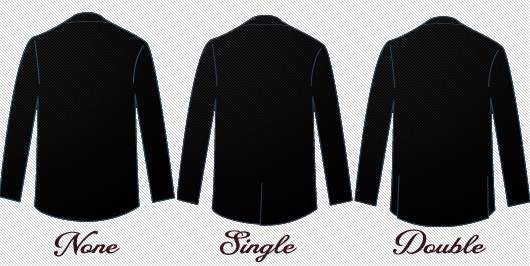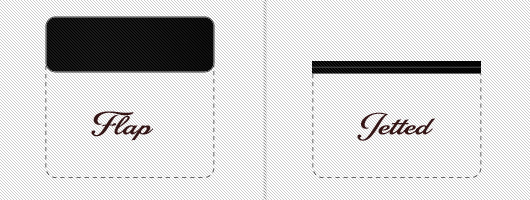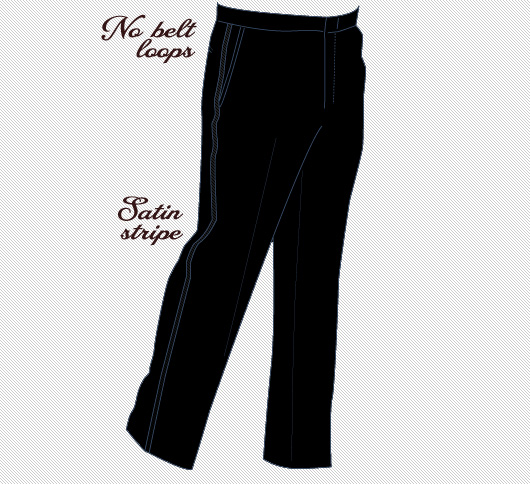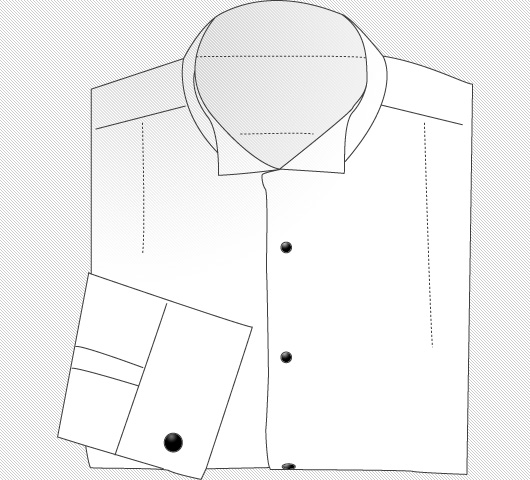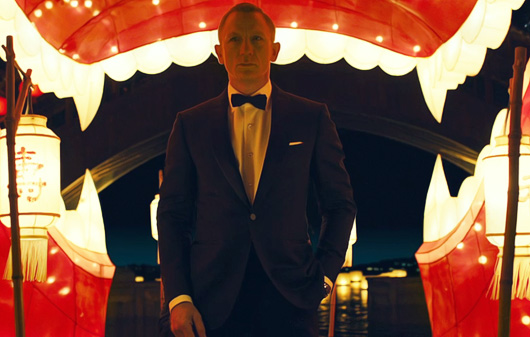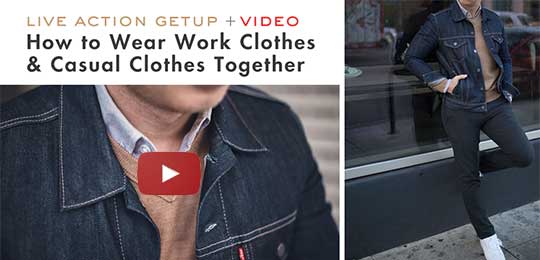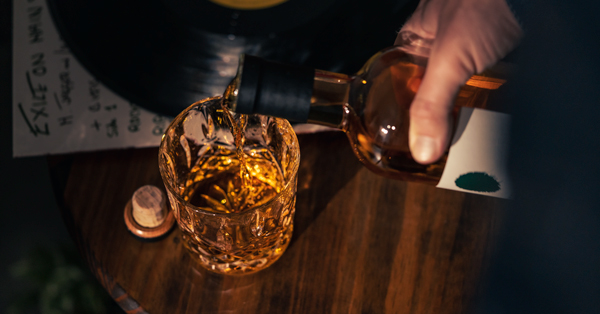The tuxedo is the most formal attire most men will have the pleasure of wearing in their lifetime. In the modern age the tuxedo has become less and less useful in a man’s wardrobe, but then again a tuxedo isn’t for day-to-day wear. A tuxedo is for those special occasions when a man wants to look his best. Weddings, bar mitzvahs, New Year’s, formal ceremonies or any other occasion when a regular suit just won’t do. Here, we discuss the basics of the tuxedo from top to bottom, renting vs. buying, and break down what a black tie invite really means.
Style
Just like a suit, a tuxedo is either single or double breasted. The main difference between a SB suit and a SB tuxedo is that a proper tuxedo will come with only one button. It lends itself to cleaner presentation and visually creates a longer silhouette for the wearer. A DB tuxedo can be worn in any combination of button stances from the minimal 1X2 all the way to 4×4. However, keeping within the realm of classic formalwear we recommend a 6X2 which is the most flattering silhouette.
Just as in a standard suit there are options for lapels. The major difference being that a tuxedo should not be worn with notch lapels. The only way to go is peak lapel or shawl collar. Both of these collars are the best option for ultimate formality (peak) and true suavity (shawl). A notch lapel is basic and is used for the daily grind and will only make you look like part of the wait staff instead of the man of the hour.
Tuxedo lapels also come in only one of two materials; satin or grosgrain (pronounced grow-grain), both of which add to the tuxedo’s formality with shine and sheen. Both materials are derived from silk. However, satin has a smooth and flat finish while grosgrain has a raised, ribbed finish and adds a bit of visual texture.
While the number of buttons differs on a tuxedo from its suit counterpart, the material also changes. On a suit, a man can have any type of buttons he likes; horn, shell, nut, mother of pearl etc. However, on a tuxedo the buttons should be covered in the matching fabric of the lapel. Satin on satin. Grosgrain on grosgrain. Again this adds to the symmetry and formality of the garment.
Tuxedo jackets can be worn with 0, 1, or 2 vents just as a suit. After hours and formalwear calls for more discretion and many men opt for a ventless dinner jacket and/or tuxedo. This depends on your personal taste and body type. We personal prefer double vents.
Unlike their suit brothers tuxedo jackets should not be worn with flap pockets. The idea of formal wear is to create the cleanest, sleekest look possible with as minimal distractions from the wearer. Jetted pockets are the only option. If it has flaps then it might as well just be a suit.
Color
Tuxedos are most commonly seen and worn in black. Black is the standard bearer for most formal occasions save a select few. No man will go wrong with a black tuxedo. However, there are other options. Midnight blue is a classic choice. Midnight blue is a happy medium between navy and black. It isn’t navy like your Monday boardroom suit. But it isn’t jet black either. Many times black can take on a greenish tinge under certain lighting. Midnight blue however, holds its true color and can look blacker than black.
Vests
Vests and cummerbunds (without a “b”) are both optional but should be considered. The idea behind both additions is to keep the wearers torso covered and modest in front of his peers and therefore more formal. Vests can be single or double breasted. However, both should never be a focal point. The cummerbund was originally used to hold opera or symphony tickets so make sure the folds face up.
Trousers
Proper tuxedo trousers come with satin or grosgrain racing stripe down the side of the leg which is a carryover from the military uniform. This is probably the most distinguishing factor from a regular suit to tuxedo. They also come without belt loops. Belts are a modern invention that actually disrupts the silhouette of a man’s ensemble. Proper tuxedo trousers will come with suspender buttons to wear with braces or side tabs for security.
Shirts
The only shirt appropriate to wear with a tuxedo is the French cuff shirt. A formal situation calls for a formal shirt. However, there are many other considerations to go along with your shirt choice. Formal shirts come with a turn down (what you wear everyday) or wing collar (the one with short wings on it). The choice is personal preference. The biggest consideration is that if you choose a wing collar make sure that the “wings” are behind the bow tie (which we’ll get to later) when wearing.
If you’re wearing a French cuff shirt then it calls for cuff links. Links should be high quality, but more style than flash. Options include gold, silver, platinum, onyx, diamonds, and mother of pearl.
An appropriate tuxedo shirt will come with studs which are replacements for the shirt’s front buttons in the same color and material as your cuff links. These are sold in sets so there is no confusion. Studs should match your links and come in several materials, but the most common are gold, silver, platinum, onyx, diamonds, and mother of pearl.
Bow Ties
A bow tie is the only proper tie to wear with a tuxedo. They come in many shapes, sizes and materials but the most common are the bat wing or butterfly in silk, satin, or velvet. The bat wing is a bit more edgy while the butterfly is classic. Overall the fabric of the bow tie should match that of the lapels and buttons. Oh, and make sure it’s not pre-tied.
Pocket Squares
White or cream in linen, cotton or silk. A simple square fold will do.
Shoes
Shoes are the foundation of an outfit and even more so in a tux. They should be plain and simple without calling attention to themselves. All options should be in leather or velvet. Choices include black plain toe oxfords, black patent leather oxfords, opera pumps or velvet slippers.
Hosiery
Socks should be black, silk, and over the calf. Period.
Renting Vs. Buying
For many men owning a tuxedo may not be the wisest investment. Unless you are attending at least two formal events per year then you may not have a need for your own tuxedo.
There are several other ways to purchase your own tuxedo without renting and looking like you’re headed to high school prom or worse. Quality tuxedoes in excellent condition can be easily found in thrift stores, vintage boutiques, and of course online. However, it may require some time and effort to find the proper style and tailoring should always be a consideration. This means you shouldn’t start shopping for your tux the week before you need it. Buy a tuxedo when you don’t need it and it will be ready for duty when you do.
Black Tie Etiquette
There will come a time when you receive an invitation to a black tie event. Here’s how to decipher the language.
“Black Tie“, “Black Tie required” – Wear black tie. Period. No exceptions.
“Black Tie Preferred”, “Black Tie Requested” – You don’t have to wear black tie, but you should. If you don’t no one will say anything but you won’t be invited back the next time.
“Black Tie Optional” – You don’t have to wear black tie, but if you do people will notice…in a good way.
“Creative Black Tie” – A traditional tuxedo ensemble jazzed up with more fashion-forward modifcations such as no tie. It’s rarely ever as creative as people think.



